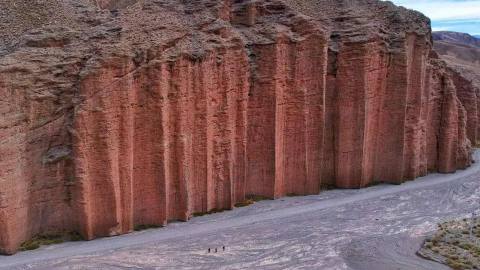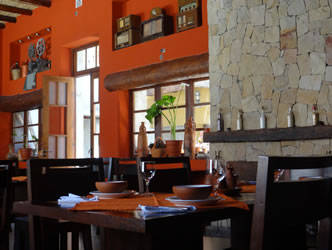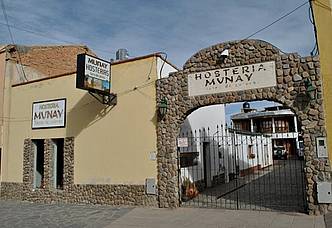In order to access this singular settlement, travelers must go along Provincial Route 5, which covers the traditional path to Upper Peru and is presently paved and in perfect condition.
Upon reaching the town, the quiet aridity of its location surprised us. Yavi is crossed by the river bearing the same name and willows dress its banks in deep green hues that make contrast with the desert scene.
One of the best ways to appreciate this small city is by walking its broad streets and contemplating the houses made of adobe and straw, the commonest materials in local constructions.
Visiting Yavi implies getting to know the magnificent church consecrated to Saint Francis of Assisi and the famous Marquis’ House. Both buildings stand facing one another on Marqués Campero Avenue.
From outside, the church Our Lady of Miracle is an interesting building. The remarkable volume arrangement managed by the combination of juxtaposed bodies in the main aisle stands out. But its most noteworthy value lies inside, where we came across a structure of adobe walls that hold rustic assembled logs on which a cane layer that supports the tiles rests.
Visiting Yavi
We immediately perceived the exceptional richness of the entire equipment. Already at the entrance, the iron fittings on the door anticipate the ornamentation of the wooden structure, whose beams and posts include carvings with cherub heads.
We took some steps inside and saw the pulpit carved in wood and gilded, which glows in the entire room. Golden is the prevailing hue: the cornices, the columns and the niches with images that contribute some relief to the set.
There is no doubt that the church of Yavi is the most outstanding building in town, like it used to be in the times of the Tojo marquises, when it functioned as the chapel of the Marquis’ House, feudal seat of the entire Argentinian Puna and a part of present Bolivia.
The Marquis House is an ancient grand house once owned by the only marquis in Argentina. This is a colonial house with thick adobe walls, tiled and mud roof and a cobbled inner yard.
The twelve rooms used by the Marquis’ family members lie around the yard. Today, it is considered Historical Museum and displays the elements and chambers used by Marquis Campero’s relatives.
One of its rooms houses Bernardino Rivadavia Library, which contains ancient volumes. Regional items are offered for sale in another room. The gardens have been specially conditioned to contain a camping site with shady willows and Siberian elms.
An interesting historical fact is that the last Marquis of Yavi joined the Independence cause and the district was the battlefield of countless advances and withdrawals of the patriot and royalist armies during the struggle for National Liberation.
Marcelo Sola
Marcelo Sola


















